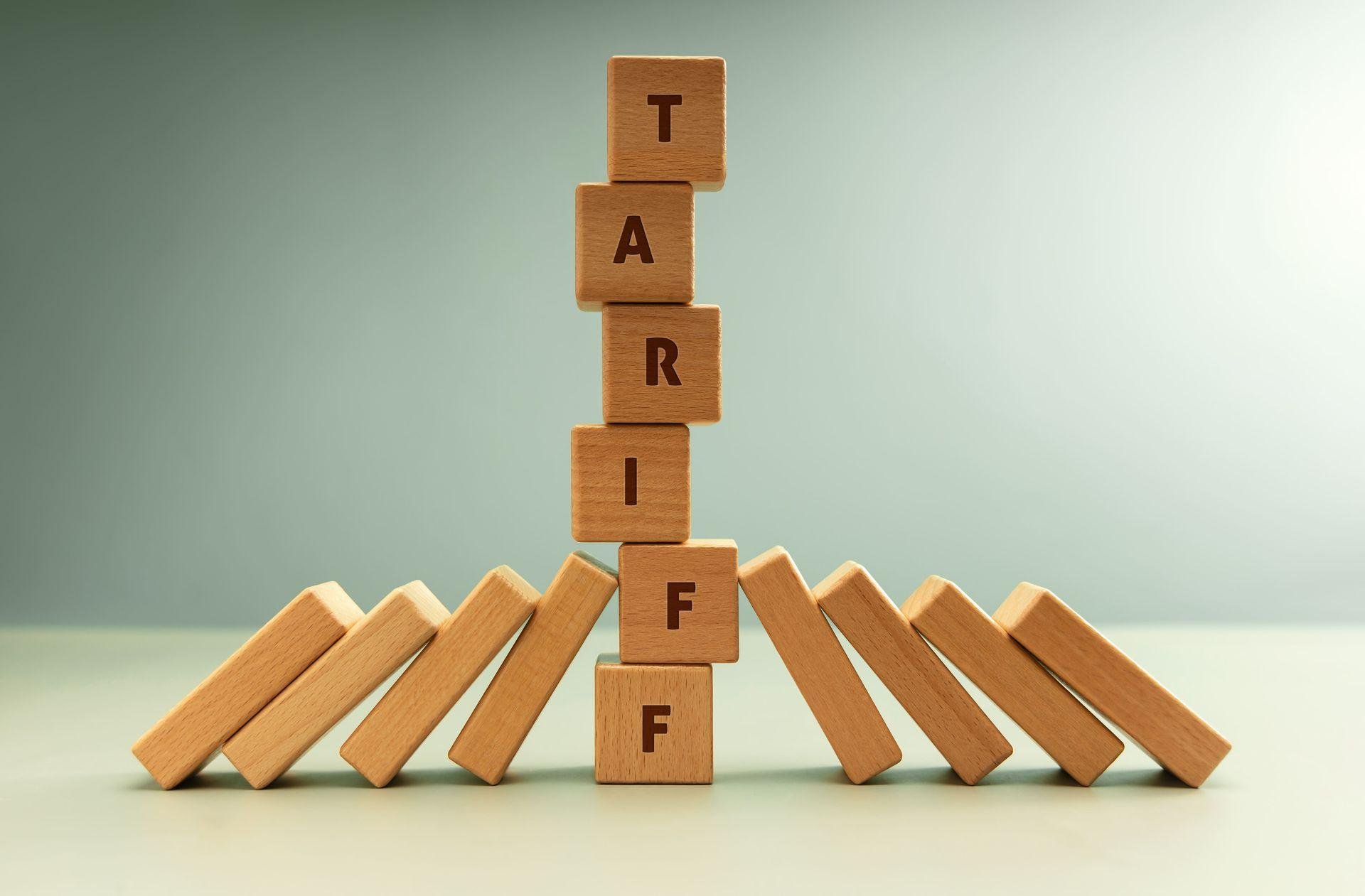
From Global Integration to New Trade Walls
For years, global supply chains thrived under falling tariffs and smoother cross-border production. Yet, a new wave of protectionism best known as the Trump Tariffs, has reshaped the landscape of international trade.
First introduced in 2017 and later expanded when Donald Trump returned to the White House in 2025, these tariffs have disrupted U.S.–China trade and forced exporters worldwide to rethink their supply chains.
This article first explains the policy background and measures of the Trump Tariffs and then explores their implications for Taiwan’s export-driven industries, including the construction screw and fastener sector.
Table of Contents
At their core, tariffs are simply taxes on imports. But in practice, they shape how trade flows and impact pricing, competitiveness, and global supply chains. Tariffs are typically used to:
- Protect local industries
- Raise government revenue
- Address trade imbalances
- Create leverage in negotiations
Types include ad valorem tariffs (a percentage of value), specific tariffs (fixed fees per unit/weight), and compound tariffs (a mix of both).
Unlike traditional tariffs, the Trump Tariffs stand out for:
- Broad-based coverage – A baseline tariff on nearly all imports
- Targeted add-ons – Extra duties for specific countries or industries
- Unilateral enforcement – Introduced outside WTO frameworks
Key measures now include:
- 10% baseline tariff (the “Liberation Day Tariffs”) since April 2025
- Reciprocal tariffs of 10%–50%, with Taiwan’s reduced to 20% (Aug 2025)
- Steel & aluminum hikes, plus targeted duties on autos, furniture, and more

The Trump administration advanced these measures to:
- Reduce persistent trade deficits
- Protect domestic industries like steel and autos
- Gain leverage in negotiations with trade partners
- Reinforce the “America First” economic agenda
The Trump Tariffs reshaped international business in three ways:
- Supply chain shifts – Multinationals moved production from China to Vietnam, Mexico, and Taiwan.
- Rising costs – Tariffs increased sourcing and compliance expenses, raising end prices.
- Trade tensions – Retaliatory measures strained WTO credibility and U.S. relations.
For Taiwan, the implications are significant:
- Policy uncertainty with fluctuating tariff rates
- Compliance complexity with HS codes and rules of origin
- Opportunities as buyers diversify beyond China
Why Construction Screws Are Part of the Story
As a construction screw manufacturer and supplier, I see first-hand how tariffs affect fasteners and related components. Screws and fasteners are small items, but they play an outsized role in construction, furniture, automotive, and industrial projects—all sectors touched by tariff policy.
When tariffs raise costs on steel and aluminum, the ripple effect extends to the raw materials used in screw production. Likewise, higher duties on autos and furniture impact fastener demand in downstream industries.
Challenges for Screw Manufacturers and Exporters
For Taiwan’s construction screw suppliers, the Trump Tariffs create both challenges and opportunities:
- Compliance demands – Precise HS codes and certificates of origin are crucial for OEM/ODM screw shipments.
- Cost management – Rising material duties pressure margins, requiring more efficient production.
- Logistics agility – Supply chains must adapt quickly to shifting tariff zones.
- Global competition – U.S. buyers seek trusted alternatives to China, opening space for Taiwanese suppliers.
Opportunities for Taiwan’s Fastener Industry
Despite challenges, tariffs have opened doors:
- OEM/ODM partnerships – U.S. importers increasingly seek Taiwanese partners for customized screw solutions.
- Quality-driven demand – Taiwan’s reputation for precision fasteners positions us as a reliable source.
- Diversification – With buyers moving away from China, Taiwan’s construction screw manufacturers can capture new orders.
At Fong Prean, we believe adaptability is key. As a Taiwan construction screw manufacturer and OEM/ODM supplier, we focus on:
- Strict compliance to ensure smooth customs clearance
- Continuous innovation in screw design and materials
- Flexible supply chain management to reduce risk exposure
- Customer-centric OEM/ODM solutions that meet global demand
The Trump Tariffs represent both a challenge and an opportunity for Taiwan’s exporters. For industries like fasteners and screws, success depends on compliance excellence, diversified supply chains, and product innovation.
By aligning trade policy awareness with industry expertise, Taiwan’s construction screw suppliers and manufacturers can navigate uncertainty and strengthen their role as trusted global partners in the post-tariff era.
- White
House – Presidential Proclamation on the Liberation Day Tariffs, April 2,
2025
https://www.whitehouse.gov/briefing-room/statements-releases/2025/04/02/liberation-day-tariffs - White
House – Adjustments to Reciprocal Tariffs (incl. Taiwan update), August 1,
2025
https://www.whitehouse.gov/briefing-room/statements-releases/2025/08/01/reciprocal-tariffs-update - White
House Executive Order – Venezuelan Petroleum Imports, March 24, 2025
https://www.whitehouse.gov/briefing-room/presidential-actions/2025/03/24/executive-order-venezuela-oil - U.S.
Department of Commerce – Fact Sheet: Steel and Aluminum Tariffs Increase
(Section 232), June 3, 2025
https://www.commerce.gov/news/fact-sheets/2025/06/steel-aluminum-232-tariff-increase - White
House – Proclamation on Section 232 Tariffs for Automobiles and Automotive
Parts, March 26, 2025
https://www.whitehouse.gov/briefing-room/presidential-actions/2025/03/26/section-232-auto-parts - U.S.
Trade Representative (USTR) – Section 301 Tariff Exclusions Extension
(through Nov. 29, 2025), May 15, 2025
https://ustr.gov/issue-areas/enforcement/section-301-investigations - Reuters
– Taiwan Secures Temporary Tariff Reduction to 20% in U.S. Reciprocal
Tariffs, August 1, 2025
https://www.reuters.com/world/taiwan-tariff-reduction-2025-08-01 - NPR –
U.S. Ends $800 Duty-Free Rule for China and Hong Kong Shipments, May 2,
2025
https://www.npr.org/2025/05/02/u-s-ends-de-minimis-china-hk - Financial
Times – U.S. Expands Section 232 Tariffs to Wood and Furniture Imports,
September 10, 2025
https://www.ft.com/content/us-232-tariffs-wood-furniture-2025 - CSIS –
Understanding the Liberation Day Tariffs: A Shift in U.S. Trade Policy,
April 15, 2025
https://www.csis.org/analysis/liberation-day-tariffs

Ling Wu, Marketing Analyst
Ling Wu is a marketing analyst at Fong Prean, focusing on market research, trend insights, and content strategy. With a passion for data-driven storytelling, Ling bridges industry knowledge with actionable insights to help businesses thrive.